Interactive Chord Progression Songwriting App
Directions
Use this interactive Chord Progression Songwriting App to build and create chord progressions for your song. Here are the rules:
- Each progression begins with the I chord.
- The I chord can go to any other chord in the scale.
- The current chord is highlighted in blue.
- Chords move from blue to green.
- As you click on the chord it will display in the the text box.
- Resolve chord progression back to the I chord.
- To start over just click on the “Clear” button.
- When you are satisfied with the progression, write it down and use it in your song.
For reference here are the chords in the key of “C”
I = C
ii = Dm
iii = Em
IV = F
V = G
vi = Am
Mack sure that you write down your results and start building lyrics and melodies around the chords created.
Click on image below to order a poster to hang on your wall


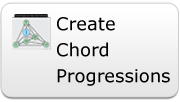
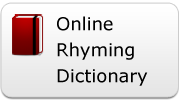
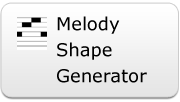
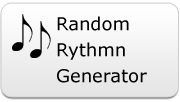

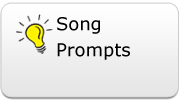

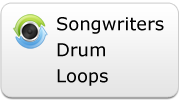
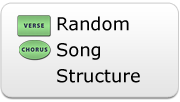

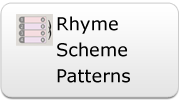
Wɑy cool! Some very valid points! I appreciate you penning this post and the rest of the site is also very good.
However, the Chord Progression tool is missing one of the most basic and crucial chord changes: the ability to go from V directly to IV. I’ve read all the posts, and I understand the importance (and admire the excellent accomplishment) of reducing the progression choices to the most basic, simple, and intuitive set while still allowing a broad range and variety of progressions. But without the ability to go from V to IV, even the most commonly used progressions — the 12-bar blues pattern (I-I-I-I-IV-IV-I-I- V-IV -I-I), the simplest mindless song pattern (I-IV-V-IV, repeat ad nauseum*), etc — can’t be created.
According to Wikipedia [https://m.wikipedia.org/wiki/Twelve-bar_blues], “The 12-bar blues or blues changes is one of the most prominent chord progressions in popular music.”
NOTE:
A few examples of popular songs, with simple progressions (based on the 12-bar blues), that require the V-IV step:
“You Can’t Do That”, ” I Feel Fine”, & “She’s a Woman’
— The Beatles
More examples (Based on the I-IV-V-IV progression —
“The chord progression, I – IV – V – IV, is the most common in Latin music — La bamba, Guantanamera, Pare cochero … on and on. One could say that I – IV – V – IV is to Latin music what the 12-bar blues is to North American music.”
— Kevin Moore, Music Reviewer/Critic):
“Mr. Brown”
— Bob Marley and the Wailers
“Undone – The Sweater Song”
— weezer
“Wild Thing”
— The Troggs
Without the V-IV step, my efforts to write bluesy songs often run into this restriction, and I’ve found it nearly impossible to go for a Reggae or Latin feel. I hope I’ve presented sufficient support for my request — Pleeease add the ability to go from V to IV! In my view, this one improvement (plus a longer field for the progression “output” and the ability to save/save as/print, of course) would raise this fun tool to the level of a professional app which, along with the other tools, would be worth money to buy!!
Thanks muchly
Very good observation. The app is based on classic western traditional music theory. The strongest cadence from the dominant (V) is to the tonic (I, vi). AS you know, blues breaks several western style music rules. Things like “blue” notes in the music scale. Current music has strong influences from blues music. As result you will find the chord movement dominant (V) to sub-dominant (IV). It would be nice to factor in the “exceptions” to the rules. Appreciate your comments.
I love the idea. It is too bad that some possibilities are missing like I -> ii ; I -> iii ; I -> IV that are also possible. But I understand that the tool has to be simple. :)
The app is designed so that the Tonic (I) can move to any other chord.as indicated in step 2 of the instructions. Chord movements from I -> ii : I -> iii : I -> IV are all possible. Of course creating directional arrow radiating out from the tonic are missing in the graphic.
This is really incredible! Thanks!
C-Em-Am-F-Dm-C-G
I – III – VI – IV – II – I – V
chord progression generator can’t produce the above example and what about the VII chord in a scale
The app is built on a major scale. To produce the chord progression would require a some additional programming to allow for notes outside of the major scale. The VII is not included only for simplicity sake. Although it can be used it is really not used for most chord progression. However in the Mixolodian scale the VIIb is used more often.
Your answer is confusing. The chord progression he listed is diatonic, he just failed to use lower case roman numerals for the minor chords Em, Am and Dm.
He could’ve simplified his issue by stating that moving from IV to ii is not allowed by your interface. They are both predominants; what is the general rule is for that? Is there any good reason to avoid two predominants in a row?
It should also be noted that there is an arrow from IV to ii, making it look like it should be allowed.
IV to ii is a valid movement. I now see the app has a bug and should allow it but does not.
It is okay to move to a chord of the same class. The IV to ii is one that should be allowed but I see that the app has a bug and needs to be updated. Thank you for finding it a pointing it out. It will get fixed.
thank much you very for all of your idea…God bless you…
when using the chord progression tool
and I start on the 6th how do I resolve the one chord
I understand one chord i s the major key I am in and the 6th is the relative minor .. Bla Bla Bla ..I just need to know when I’m starting on a different mode of the major scale where does the one resul of
The tool is build on cadences. Because the vi is the relative minor to the I and can easily be substituted with one another, there in no real cadence for this chord movement. Since the vi is so closely related to the tonic you could simply substitute the tonic with the vi chord. The I chord becomes the vi chord.
thank you for that information now I am assuming if I start on the second Dorian or third Phrygian and so on the same rule applies
Yes, for the most part the chord movement will still work if you start in a Dorian mode or any other mode. Keep in mind, this tool always starts on the Tonic. But for modal scales, make your second chord the first chord of your progression and remove the Tonic. The basic concept with this tool is built on the theory of cadences.
thank you so much I never thought I would get this much help ..can I ask why if I’m working within the mods do I start with the second chord and eliminate the one
When creating a mode scale, the starting point is the Ionian scale which is the same as the basic Major scale. To create a mode the composer will “shift” the starting note. For example: to make a Dorian scale the first note of the scale is shifted from the 1st to the 2nd note. My main point is explaining that your eliminate the I note is to use the same concept of shifting the starting tone. For a Dorian scale the chord progress should start on the ii chord, not the I (tonic) chord.
I was recommended this blog through my cousin. I am now not positive whether this post is written through him as nobody else
recognise such distinctive about my difficulty. You
are incredible! Thank you!
Don’t mean to sound like a ****, and while i agree most times, a progression doesn’t always start with the I.
You are absolutely correct. Not ALL chord progressions start with the tonic. A quick workaround is navigate to another starting chord and move on from there.
isnt there supposed to be a seventh chord like VII or something?
Your are correct. Technically, there is a vii diminished chord. For nearly all genre of popular music this chord is rarely used. To simplify the processes of creating the progressions this has been omitted.
A person essentially help to make severely articles I might state. This is the first time I frequented your web page and thus far? I amazed with the research you made to create this actual put up incredible. Wonderful task!